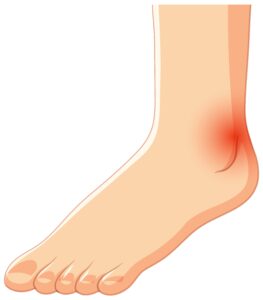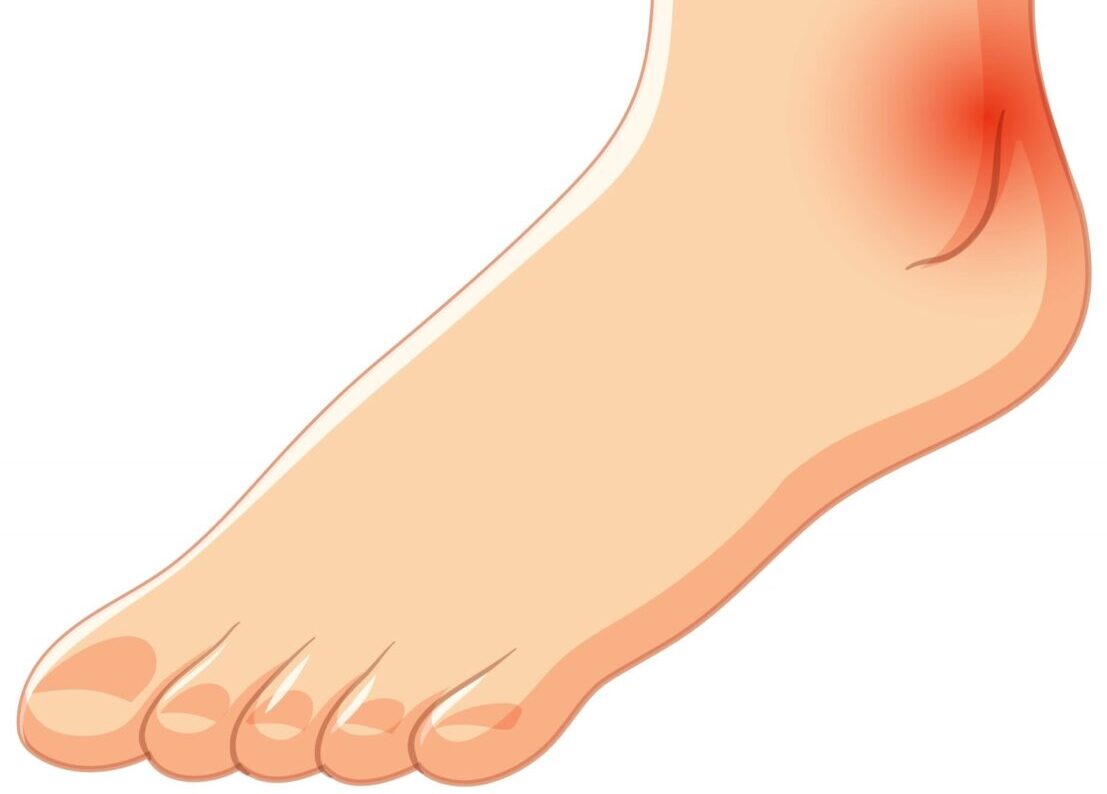Flat Foot Problems

Flat feet, also known as fallen arches, is a condition that affects a significant portion of the population. Whether inherited or developed over time, flat foot problems can range from mild discomfort to severe pain and mobility issues. In this comprehensive guide by foot specialist in GTA, we will explore the causes, symptoms, treatments, and long-term management of flat feet. We’ll also look at how flat feet can impact your overall foot health, and why proper care is essential for preventing further complications.
What is Flat Foot?
Flat foot, also known as pes planus, is a condition where the arch of the foot either doesn’t develop or collapses over time, leading to the entire sole making contact with the ground. This condition can occur in one or both feet and is particularly common in children, though most children develop normal arches as they grow. For adults, flat foot problems can lead to discomfort, especially if they engage in activities that place stress on their feet, like running, walking, or standing for long periods.
Types of Flat Foot Problems
- Flexible Flat Foot:
In this type, the arch appears when the person is sitting or not putting weight on the foot, but it flattens when standing. This type is often painless, but over time, it can cause strain and fatigue in the legs and feet. - Rigid Flat Foot:
Rigid flat foot is less common and more severe. In this condition, the arch remains flat even when the person is sitting or resting. This type often results in significant pain, reduced mobility, and difficulty wearing certain types of shoes. - Acquired Adult Flat Foot:
This occurs when the arch collapses over time, often due to injury, obesity, or wear and tear. Adults with previously normal arches can develop flat foot problems as they age, particularly if they have other underlying foot issues.
Causes of Flat Foot Problems
- Genetics:
Many people are born with flat feet, inheriting the condition from their parents. This type is known as congenital flat foot and can be noticed during early childhood. - Weak or Damaged Posterior Tibial Tendon:
The posterior tibial tendon helps maintain the arch of the foot. Injuries or weakening of this tendon can result in the arch collapsing over time, leading to acquired flat foot problems. - Arthritis:
Rheumatoid arthritis and other inflammatory conditions can contribute to the development of flat feet, especially in older adults. - Injury:
Trauma to the foot or ankle can cause damage to the structures that support the arch, leading to flat feet. For example, fractures or dislocations can disrupt the normal alignment and cause a collapse in the arch. - Obesity:
Excess weight places additional strain on the arches, which can cause them to flatten, particularly in people with predispositions to flat feet. - Aging:
As people age, the tendons and ligaments in their feet may weaken, leading to flat foot problems. This type is common in older adults and is often associated with pain and reduced mobility.
Symptoms of Flat Foot Problems
Flat foot problems can manifest in a variety of ways, ranging from mild discomfort to severe pain. Common symptoms include:
- Foot Pain:
The most common symptom of flat feet is pain, particularly in the arch and heel areas. This pain can worsen after long periods of standing, walking, or running. - Swelling:
Swelling in the inner part of the ankle can occur as a result of strain on the tendons that support the arch. - Knee, Hip, or Lower Back Pain:
Flat feet can affect the alignment of the legs and cause strain on the knees, hips, and lower back. The altered gait from flat feet can lead to pain in these areas over time. - Fatigue:
Individuals with flat foot problems may experience fatigue in their feet and legs after minimal activity due to the lack of proper arch support. - Difficulty Standing on Tiptoes:
If the arches are too weak or have collapsed entirely, individuals may find it difficult or painful to stand on their tiptoes.
Long-Term Effects of Flat Foot Problems
Ignoring flat foot problems can lead to long-term complications. Over time, people with untreated flat feet may develop:
- Plantar Fasciitis:
Flat feet can overstretch the plantar fascia, a band of tissue that supports the arch, leading to plantar fasciitis—a painful condition that affects the heel. - Tendonitis:
Strain on the tendons in the feet, particularly the posterior tibial tendon, can lead to tendonitis, causing inflammation, pain, and further damage to the foot structure. - Arthritis:
The abnormal positioning of the foot due to flat feet can increase the risk of developing arthritis in the foot and ankle joints.
Treatment Options for Flat Foot Problems
Fortunately, there are several ways to manage and treat flat foot problems. The right treatment depends on the severity of the condition and the symptoms experienced.
1. Orthotic Devices
Orthotics are custom-made insoles that support the arch and provide cushioning for the foot. These devices can help alleviate pain, correct improper foot positioning, and prevent further damage. While they don’t cure flat feet, they can greatly reduce discomfort and make daily activities more manageable.
2. Physical Therapy
For people with flat foot problems caused by tendon injuries or weakened muscles, physical therapy can be highly effective. Stretching and strengthening exercises can improve the function of the muscles and tendons that support the arch, reducing pain and improving mobility.
3. Supportive Footwear
Wearing shoes with good arch support and cushioning is essential for managing flat foot problems. Look for shoes designed for stability and comfort, especially if you stand or walk for long periods. Avoid wearing flat shoes or heels without arch support, as these can exacerbate the condition.
4. Medications
Over-the-counter pain relievers, such as ibuprofen, can help reduce inflammation and pain associated with flat feet. In more severe cases, corticosteroid injections may be used to relieve pain and swelling.
5. Surgical Intervention
In cases where conservative treatments do not alleviate the symptoms, surgery may be necessary. Surgical options can involve repairing or replacing damaged tendons, reshaping bones, or fusing joints to create a more stable foot structure. Surgery is usually reserved for individuals with severe pain or deformity.
Importance of Early Diagnosis and Management
Detecting and managing flat foot problems early on can prevent many of the complications associated with the condition. Regular check-ups with a foot specialist like a chiropodist can help assess the health of your feet and catch any issues before they worsen.
Can Flat Feet Be Prevented?
While not all cases of flat feet can be prevented, there are steps individuals can take to reduce their risk of developing flat foot problems. Maintaining a healthy weight, wearing supportive footwear, and performing regular foot exercises can strengthen the muscles and tendons that support the arch.
Related Foot Care Issues:
Flat foot problems can sometimes lead to other foot issues or may coexist with them. For example, a person with flat feet may experience conditions like trench foot, which results from prolonged exposure to damp, unsanitary conditions. You can read more about it here.
Additionally, for those with diabetes, taking care of flat feet is crucial. Flat feet can worsen the risk of foot ulcers, infections, and complications in diabetics. Learn more about the importance of foot care for diabetics to protect your overall health.
Lastly, for general foot hygiene, people with flat feet must practice proper foot cleaning techniques, including wiping their feet after walking or exercise to prevent infections. Discover the benefits of foot wiping to keep your feet healthy.
Conclusion
Flat foot problems can affect anyone, from children to adults, and can lead to discomfort and serious complications if not managed properly. Early detection, lifestyle changes, and proper footwear can make a significant difference in managing flat feet. If you’re experiencing symptoms or believe you may have flat feet, consulting a chiropodist like Arezou Hassani, a specialist in foot care, can help you navigate your treatment options and prevent long-term complications. Take care of your feet—they are the foundation of your body’s mobility!
About Author
Hi, I’m Arezou Hassani, a Chiropodist practicing in Ontario, Canada. I hold a Bachelor of Science in Psychology and an Advanced Diploma in Chiropody. As a member of the College of Chiropodists of Ontario and other professional organizations, I have extensive experience treating foot issues for patients of all ages. I founded Footwyse to bridge innovative research with practical foot care solutions, offering virtual consultations and curated products. I’m passionate about helping people achieve optimal foot health and invite you to join me in this journey toward healthier feet.

